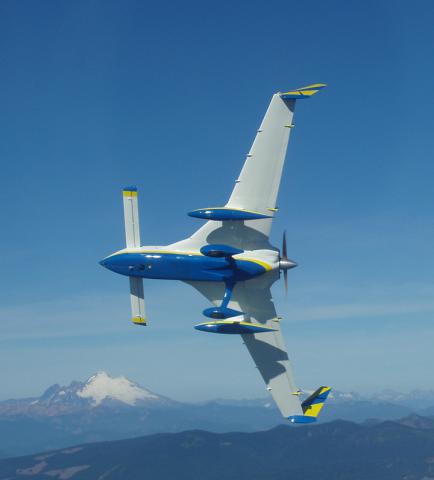

EAA Flight Advisor
A Flight Advisor helps the pilot conduct a self evaluation as well as evaluate the flying characteristics of the aircraft. The pilot then uses that evaluation to decide whether he or she is capable of flying that airplane. If not capable, the Flight Advisor explains where and how he or she can get the proper instruction, or alternatively find someone to make the initial flights.
When time for first flight comes around, I stop my role as a Flight Advisor and become a flight instructor, chase pilot and safety observer. This is something I do on my own, not as a part of any EAA program, but it does allow me to help ensure that the first flight is both safe and enjoyable for the owner or builder.
I try to take the prospective pilot up for a flight demonstrating how to handle emergencies in the plane, differences between a canard aircraft and others the pilot may have flown, as well as giving them a feel for what it will be like to pilot their own canard.
The FAA has introduced a good Advisory Circular (AC90-109) that covers transition training, which provides some good information for a pilot trying to hone their own skills for first flight. it can be found at:
http://www.faa.gov/documentLibrary/media/Advisory_Circular/AC_90-109A.pdf
The Advisory Circular (AC90-89a) for flight test of a homebuilt can be found at:
http://www.faa.gov/documentLibrary/media/Advisory_Circular/AC_90-89B.pdf
Flying chase also gives me the chance to experience one of the happiest moments in the builder's life: the safe conclusion of the first flight. The smiles these folks have are incredible!

Matt Baxter - Long-EZ N530EZ - 21 March 1992 - Arlington, WA
Joe Person - VariEZE N29NS - 26 December 1993 - Arlington, WA
Joe had earlier helped a friend build a Long-EZ, so this was in essence his second plane. Unfortunately, it was lost due to an engine failure during the NW EAA Fly-In in 1998.
Joe setting up for his first landing
Joe assumes a swaggering pose after the flight (yes, it was really cold!)


Morning Star orbiting the field
Mike, Maureen, Annie and Amy celebrate a family effort

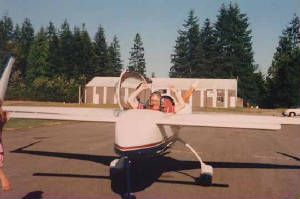
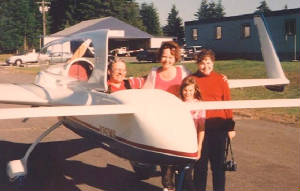

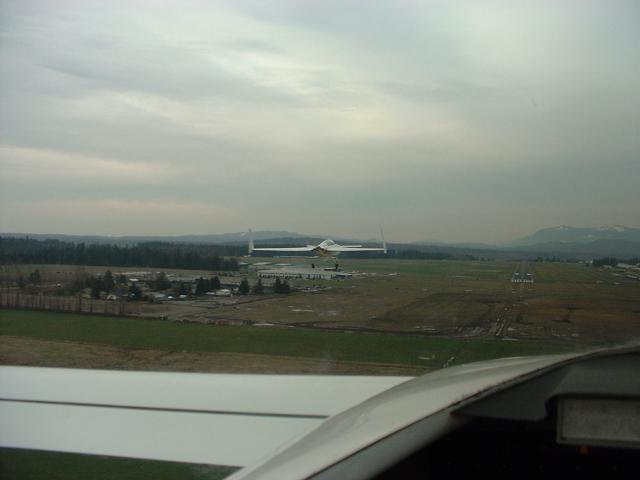
Wayne orbiting the field during the first flight
The look says it all
There's one happy Aussie!



Joe showed true dedication when after the lost of his first VariEZE, he went back and spent 6 years building a second, even better than the first. He performed the first flight of the new plane in September of 2003.
Mike Sabourin - Long-EZ N747MS – 1 September 1995 - Arlington, WA
This airplane is one of the most beautiful composite planes I have ever seen. It was recognized at the NW EAA Fly-In before it had even undergone its first flight, and it later won a Lindbergh Award at Oshkosh for its workmanship. Mike spent 11 hard years building it and the dedication sure shows off.
John Kosa - Long-EZ N70JK - 22 March 2002 - Arlington, WA
John has a very interesting background. When asking him questions about his experience prior to first flight, I asked if he had much tailwheel time, to which he said "very little". Later on in the conversation, he suddenly asked "Does a B-17 Fortress count as tailwheel time?" When I said yes, then he asked to change his earlier answer to "3,500 hours of tailwheel time". He had forgotten the years he had spent instructing in B-17’s during WWII.
John was 82 years old at the time of his first flight. He exhibited superb airmanship and great eyesight, better than many of the other younger pilots I fly with. John decided to sell his plane after just a few flights because he had too many other demands on his time and wallet. Selling it was a real loss to the NW Canard community.
Mike Drew - VariEZE N840EZ - 2 August 2003 - Paine Field, WA
One of the reasons to have a chase pilot during a first flight is so that you have someone to help out if things go wrong. What I never planned on was that the chase plane might be the one with the problems.
During a low approach at the end of the flight, I lost most of my engine power and had to declare an emergency, landing downwind on the long runway at Paine Field. Things happened so quickly that the only radio call I had time to make to Mike was "You're on your own - I've lost my engine." Not exactly what I had hoped to accomplish as a chase pilot that day.
Wayne Blackler - Long-EZ N360WZ - 9 June 2004 - Arlington, WA
Wayne started his Long-EZ in a very unusual way: at the age of 15 while living in Melbourne, Australia. He spent 16 on-again, off-again years building the plane, with the final result being an utterly fantastic plane painted in a unique silver finish.
Wayne moved to the States in 2001 and has dedicated his every minute to finishing the plane.
His first flight went off without a hitch, and the look of joy when it was over was fantastic. Even better, though, was the joy he shared with his mum when telling her of his achievement.
Who's next?
Joe's Cozy against the spring clouds
Another happy camper after the flight

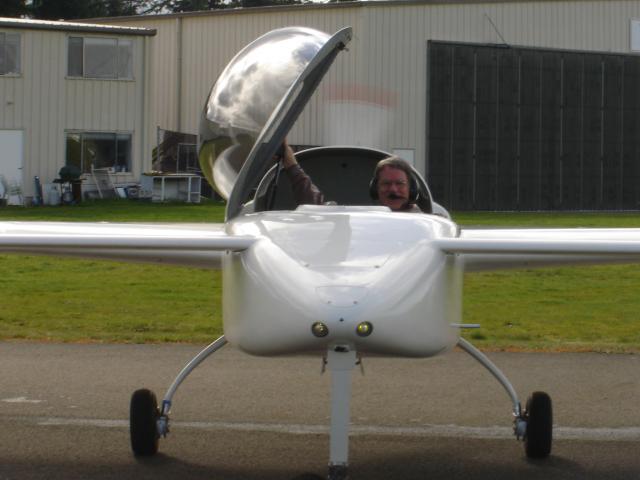
“The course of the flight up and down was exceedingly erratic, partly due to the irregularity of the air, and partly due to the lack of experience in handling this machine.”
– Orville Wright, 1903
Mike is elated
John Kosa, age 82, lining up for his first landing in his Long-EZ
John and I pose for the cameras after a successful first flight
He has since moved back home to Melbourne, Australia, taking the Roo (his Long-EZ) with him. Has continued to modify and upgrade his plane to make it faster – it is now one of the fastest 4-cylinder Long-EZ’s around.
Joe Hull - Cozy Mk IV N31CZ - 17 April 2006 - Arlington, WA
Joe's Cozy presented a unique combination of both a new plane and a new engine approach: a Mazda rotary engine driving the venerable 4-seat canard design. The first flight, though, went off without a hitch as the engine ran smoothly, temperatures stayed in the green, and all systems worked as expected.
After almost 40 minutes in the air, Joe brought the plane in for a smooth landing on runway 16 at Arlington.
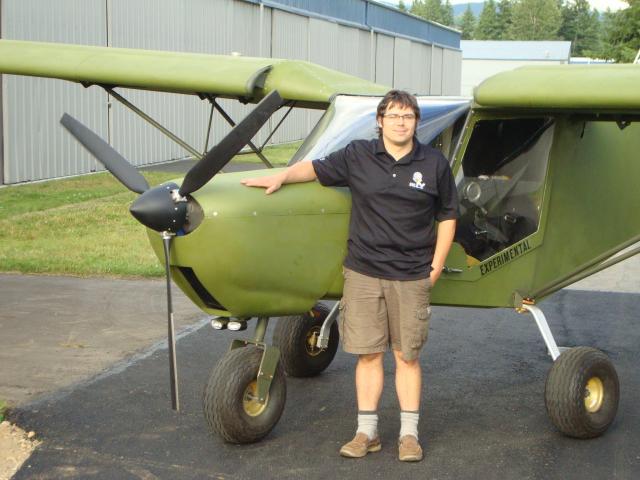
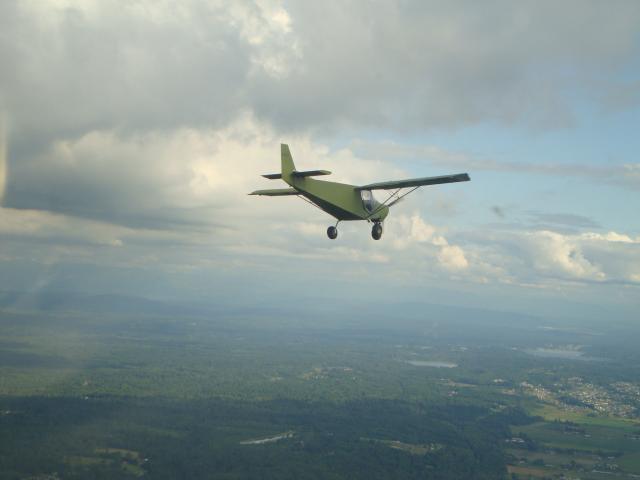
John flying his 701 prior to returning to land on his First Flight
A happy John poses with his steed.
John Marzulli - CH701 N&01GV - 20 July, 2011 - Arlington, WA
John's plane is the opposite of the others I have helped through first flight. Instead of being high-speed planes that gobble up lots of runway, John's 701 is optimized for very short fields, high rate of climb, and slow flight. As a result, i wasn't able to fly chase in my Long-EZ, instead having to borrow John's 2nd plane, a C150.
Because of the performance of the 701, it far outclimbs the C150, even with just me in it. Also, when John slowed down even by dumping full flaps, i often found myself overtaking him.
.
Shawn Li - RV-7 N168LW - 27 May 2014 - Everett, WA
Shawn's RV shone in the bright sunlight as he lifted off on a first flight after 3+ years of construction. Although Shawn and I met through our EAA chapter, it turned out he worked just upstairs from me at Boeing. Soon after takeoff during the climbout to 3,500', he noticed one cylinder was running hot, but as we leveled off, the temperature dropped and the other engine parameters were normal. After an uneventful 40 minute flight, Shawn and his RV touched down in a near-perfect 3-point landing.
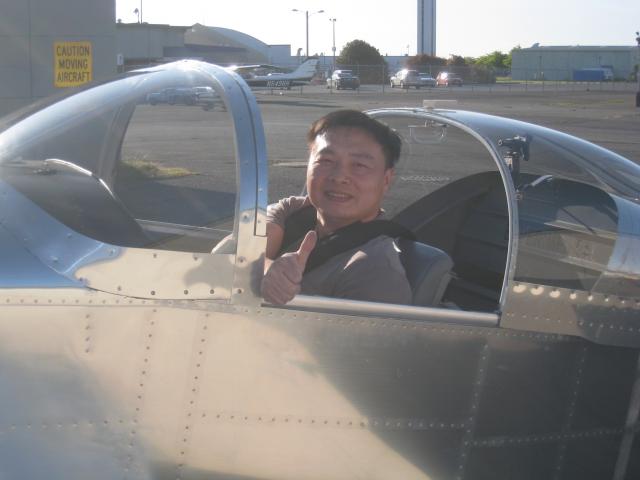

Shawn is all smiles.
The RV cruises in clear smooth air over Everett